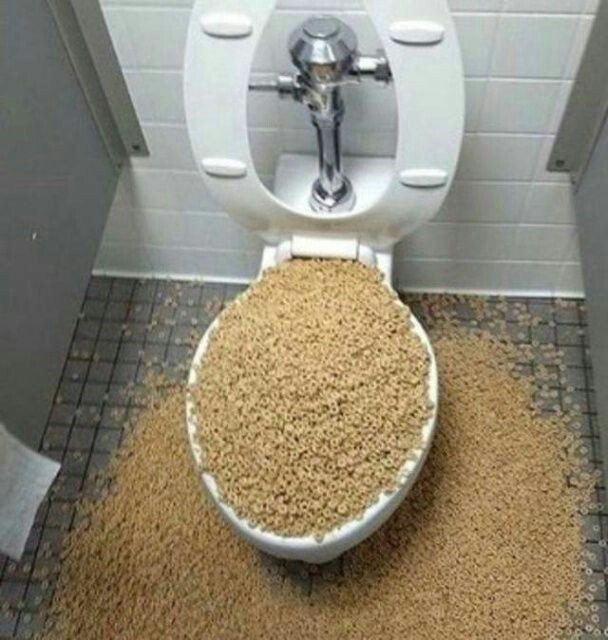Can You to Dispose of Food in the Toilet?
Can You to Dispose of Food in the Toilet?
Blog Article
Are you trying to find related information on Is it safe to flush food (especially rice) down the toilet??

Intro
Many people are commonly confronted with the predicament of what to do with food waste, particularly when it concerns leftovers or scraps. One common concern that develops is whether it's alright to flush food down the commode. In this article, we'll explore the reasons that people may think about flushing food, the repercussions of doing so, and different methods for proper disposal.
Reasons why individuals may think about purging food
Lack of understanding
Some individuals might not be aware of the possible injury brought on by purging food down the toilet. They may wrongly believe that it's a harmless practice.
Ease
Flushing food down the bathroom may appear like a fast and easy service to throwing away unwanted scraps, especially when there's no neighboring trash can readily available.
Idleness
Sometimes, people might simply choose to flush food out of large negligence, without thinking about the repercussions of their actions.
Consequences of flushing food down the bathroom
Ecological effect
Food waste that winds up in waterways can contribute to air pollution and injury aquatic environments. In addition, the water utilized to flush food can strain water resources.
Pipes issues
Flushing food can cause clogged up pipes and drains, causing costly plumbing repairs and troubles.
Types of food that need to not be flushed
Fibrous foods
Foods with fibrous textures such as celery or corn husks can obtain entangled in pipelines and trigger clogs.
Starchy foods
Starchy foods like pasta and rice can absorb water and swell, leading to clogs in pipes.
Oils and fats
Greasy foods like bacon or food preparation oils need to never be flushed down the commode as they can strengthen and trigger clogs.
Appropriate disposal methods for food waste
Utilizing a garbage disposal
For homes equipped with waste disposal unit, food scraps can be ground up and flushed via the plumbing system. Nevertheless, not all foods are suitable for disposal in this way.
Recycling
Particular food packaging products can be reused, minimizing waste and minimizing environmental impact.
Composting
Composting is an environmentally friendly means to take care of food waste. Organic products can be composted and utilized to improve dirt for horticulture.
The significance of correct waste management
Minimizing ecological damage
Appropriate waste administration methods, such as composting and recycling, assistance reduce contamination and protect natural resources for future generations.
Protecting plumbing systems
By staying clear of the method of flushing food down the bathroom, property owners can protect against costly pipes repairs and keep the stability of their plumbing systems.
Final thought
Finally, while it might be tempting to flush food down the commode for comfort, it is necessary to understand the potential repercussions of this action. By taking on proper waste management techniques and dealing with food waste properly, people can add to much healthier plumbing systems and a cleaner atmosphere for all.
FLUSH FOOD DOWN THE TOILET?
FLUSHING FOOD CAN CAUSE BLOCKED DRAINS IN YOUR HOME
All of the plumbing fixtures in your home are connected to the same sewer pipe outside of your home. This outdoor sewer pipe is responsible for transporting all the wastewater from your home to the Council sewer mains. Even small pieces of food that go down the kitchen sink can cause problems for your sewer. It should therefore be obvious that flushing larger bits of food, such as meat, risks a clog in either the toilet itself or the sewer pipes. Flushing greasy food is even more problematic because oil coagulates when it cools, coating the interior lining of your pipes.
THE TOILET IS NOT A BIN
Food isn’t the only thing that people shouldn’t be flushing down the toilet. People use the toilet to dispose of all kinds of things such as tampons, makeup wipes, dental floss, kitty litter and even underwear. Water goes to great lengths to educate residents about the high costs and stress placed on wastewater treatment systems simply from people flushing the wrong stuff down the toilet. It costs taxpayers millions of dollars each year, and homeowners thousands in blocked drain repairs.
FLUSHING FOOD IS A WASTE OF WATER
Flushing food is a waste of our most precious resource - water. In June this year Level 1 water restrictions were introduced to protect water supply from drought conditions. Much of New South Wales continues to be affected by prolonged drought with recent figures revealing up to 97 per cent of the state remains in drought. Depending on whether you have a single or dual flush toilet, every single flush uses between five and 11 litres of water. In the current climate this is a huge amount of water to be wasting on flushing food that should be placed in the bin (or better yet, the compost).
https://www.jabplumbingsolutions.com.au/blog/can-you-flush-food-down-the-toilet

We had been shown that editorial on Is it safe to flush food (especially rice) down the toilet? through a friend on our other web page. Are you aware of somebody else who is curious about ? Take a moment to share it. Thank you for your time. Please pay a visit to our blog back soon.
Browse Website Report this page